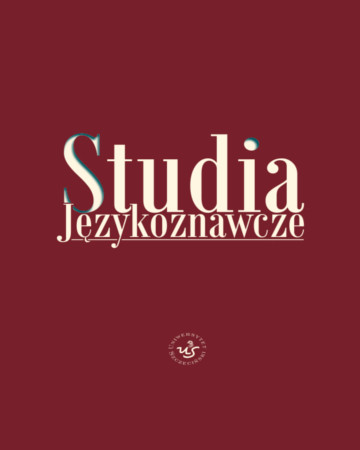





| Authors: |
Izabela
Kępka

Uniwersytet Gdański, Wydział Filologiczny, Gdańsk |
| Keywords: | the language of poetry of Jacek Kaczmarski linguistic creation evaluation |
| Data publikacji całości: | 2018 |
| Page range: | 13 (177-189) |
| 1. | Źródło |
| 2. | Kaczmarski, Jacek. Antologia poezji, red. Krzysztof Nowak. Warszawa: Demart 2012. |
| 3. | Opracowania |
| 4. | Gajda, Krzysztof. „Próba całości, czyli o problemach z porządkowaniem”. W: Jacek Kaczmarski, Antologia poezji, red. Krzysztof Nowak. Warszawa: Demart 2012. |
| 5. | Gajda, Krzysztof. Jacek Kaczmarski w świecie tekstów. Nowe wydanie, poprawione i poszerzone. Poznań: Wydawnictwo Poznańskie 2013. |
| 6. | Kępka, Izabela. „Językowa kreacja psa i jej funkcje w poezji Jacka Kaczmarskiego”. Studia Językoznawcze. Synchroniczne i diachroniczne aspekty badań polszczyzny 16 (2017): 135– 138. |
| 7. | Kępka, Izabela. „Gdy królewską godność zachowały tylko kamienne lwy…, czyli o językowej kreacji lwa w piosenkach Jacka Kaczmarskiego”. Poznańskie Studia Polonistyczne. Seria Językoznawcza, red. Małgorzata Witaszek-Samborska 24 (2017), 2, 59–72. |
| 8. | Kopaliński, Władysław. Słownik symboli. Warszawa: Oficyna Wydawnicza Rytm, 2008. |
| 9. | Nowa encyklopedia powszechna PWN. T. VI. Warszawa: Wydawnictwo Naukowe PWN, 1996. |
| 10. | Skorupska-Raczyńska, Elżbieta. Kreacja ojca w powieściach nadniemeńskich Elizy Orzeszkowej (studium językowo-stylistyczne). Gorzów Wielkopolski: Wydawnictwo Naukowe Państwowej Wyższej Szkoły Zawodowej, 2013. |
| 11. | Skubalanka, Teresa. „Językowa kreacja Jacka Soplicy (Księdza Robaka)”. W: taż, Mickiewicz, Słowacki, Norwid. Studia nad językiem i stylem. Lublin: Wydawnictwo UMCS, 1997, 20–33. |
| 12. | Wyrwich, Mateusz. „Półportret bez kanalii”. Życie, 8.06.2001. |
| 13. | Żuk, Grzegorz. „Językowy obraz świata w polskiej lingwistyce przełomu wieków”. W: Przeobrażenia w języku i komunikacji medialnej na przełomie XX i XXI wieku, red. Małgorzata Karwatowska i Adam Siwiec. Chełm: Wydawnictwo PWSZ, 2010, 239–257. |